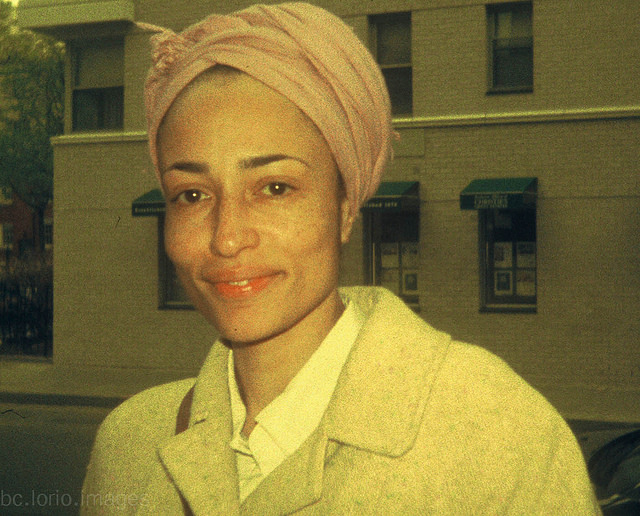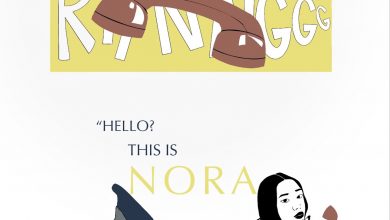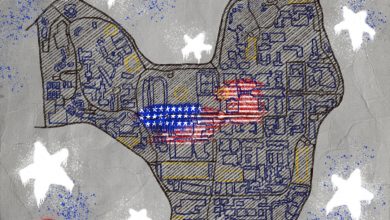Zadie Smith: Telling the Truth about Beautiful Women

Zadie Smith was once described by fellow black woman writer, Chimamanda Ngozi Adichie, (probably now most famous for having been featured on Beyonce’s “***Flawless”) as “this brilliant woman who’s also a hot babe,” adding that “I think it’s very important that brilliant women step out there and be hot babes.” Judging by the above picture, I’m sure we can all agree that Zadie Smith is a hot babe. Nevertheless, if Zadie had had a chance to respond to Chimamanda, she might have said something along the lines of, “I think it’s very important that hot babes step out there and be brilliant women.” This is at least the impression that I get from Zadie Smith’s work, which comprises four novels, a few short stories and several essays: that she would like women to be more than just beautiful.
Zadie Smith was born in northwest London in 1975 to a Jamaican mother and an English father. She attended college at Cambridge University and wrote her first novel, White Teeth, during her last year there. White Teeth was published in 2000 and made her one of those rare writers who is loved and respected at a very young age. Her third novel, On Beauty, was shortlisted for the Man Booker prize and won the Orange prize. Her short stories have been published in The New Yorker, The Paris Review and Granta magazines. She is currently a tenured professor of Creative Writing at NYU. These particular successes have made Zadie Smith something of a phenom, and it is important to realize that her being so loved and respected is noteworthy. There are not many other black British female writers, especially not ones who grew up in the working class, who have been so lovingly welcomed into the elite club of high literature. There’s something about Zadie Smith’s writing that you simply have to recognize as brilliant. For me, it’s the way she writes about women.
In White Teeth, she writes:
“And it’s about time people told the truth about beautiful women. They do not shimmer down staircases. They do not descend, as was once supposed, from on high, attached to nothing other than wings. Clara was from somewhere. She had roots.”
This particular “truth” is a necessary one, mainly because even now, women—especially beautiful women—are treated in art, in literature, in life, as mythic objects. They are never fully granted subjectivity. You have the figure of the “manic pixie dream girl” in movies like Elizabethtown, who are free-spirited beautiful girls but lack depth. To be sure, the phrase has been overused, but the basic idea behind it—that female characters written by men who exist solely to catalyze the male protagonist’s self-journey are grossly inadequate—remains true. It is this idea of the beautiful, mythical woman that Zadie Smith is writing against.
In On Beauty, there is a character, Victoria Kipps, who (spoiler alert) sleeps with the white middle-aged protagonist professor, Howard Head, and whose actions basically result in the dissolution of his marriage. At first, I was dissatisfied with her character because she seemed to be a mythical character. She was beautiful with perky breasts and upright bum, and she came into Howard’s life at a time when he had stopped believing in beauty. Because we saw her through Howard’s eyes, she did take on some mythic qualities. However, reading the book again, I noticed that her character existed precisely to question the mythology of beautiful women. The only reason she appears mythical is because we come to her through Howard. She doesn’t really get to explain herself, but towards the end, Howard realizes that her actions had nothing to do with him. He was the mythic professor she slept with that catalyzed her self-journey.
In the same book, Zadie Smith also complicates the notion of mythical woman by introducing the figure of the mythical man. The only other character who has the same effect on people that Victoria does is Carl Thomas. He is a young black poet, and we never really learn where he is from. At the end of the novel, he literally disappears. He is influential in all the characters’ lives, but we never learn what happens to him. He is from nowhere; he has no roots. With the figure of Carl, Zadie Smith calls attention to two troubling literary tropes. One, the vanishing character, and two, the black boy that everyone wants to sleep with. The vanishing black boy is a harmful trope with the same origins as the mythical beautiful woman: they are objects of desire in the white/male gaze.
After first reading On Beauty, I was very dissatisfied with both Carl and Victoria’s characters because they seemed to be nothing more than objects of other people’s desire, but the more I thought about it, the more I realized that they resisted this projection of desire onto their bodies by themselves articulating their own desire. They dated each other, instead of the several other people that wanted them. To some extent, they used the people that had wanted to use them. Regarding the plight of women, one of the characters in On Beauty, poet-professor Claire Malcolm wonders:
“And were they still like that – these new girls, the new generation? Did they still feel one thing and do another? Did they still only want to be wanted? Were they still objects of desire instead of – as Howard might put – desiring subjects?”
Though I have chosen to focus on On Beauty, Zadie Smith is able to articulate in all her works the ways that women, even beautiful women, can be desiring subjects. In her latest novel, NW, the two female protagonists insist on pursuing the things they want, sometimes even at the expense of their husbands. In her short story, “Big Week,” the protagonist’s wife divorces him after several years and children because she no longer wants to be married to a man she is not attracted to. In Smith’s work, the women consistently subvert other people’s desire by insisting on their own. I hope that eventually we all learn how to want more than just being wanted.
P.S. Zadie Smith is a kick-ass woman, and you should read her work.





Thank you for selecting my picture to illustrate your essay!